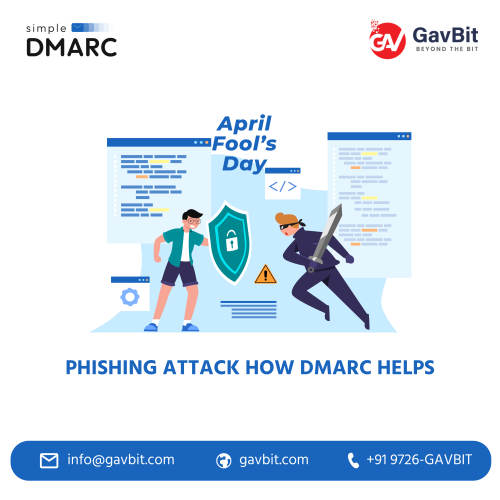Phishing Attacks: Protect Yourself on April Fool's Day
Introduction:
Phishing attacks are one of the most common cyber crimes today, and they can cause a lot of damage to individuals and businesses. Phishing scams involve tricking people into giving away their personal or sensitive information, like login credentials, credit card numbers, or social security numbers. These scams can be very convincing and often rely on social engineering tactics to exploit people’s trust.
April Fool’s Day is a perfect time to talk about phishing attacks because scammers often use humor and trickery to lure in victims. They might send an email or message that appears to be a joke, but actually contains a malicious link or attachment. It’s important to be on guard against these types of attacks and to know how to recognize them.

What are Phishing Attacks?
Phishing attacks are a type of cyber crime that involves using social engineering tactics to trick people into giving away their personal or sensitive information. These attacks often involve sending fraudulent emails or messages that appear to be from a legitimate source, such as a bank or e-commerce site.
The goal of phishing attacks is to collect sensitive information that can be used for fraudulent purposes, such as stealing money or identity theft. Phishing attacks can be very convincing and sophisticated, and they often rely on exploiting people’s trust and emotions.
Common examples of phishing scams include emails that claim to be from a bank or other financial institution, asking the recipient to verify their account information or reset their password. Another example is an email that appears to be from a trusted retailer, offering a great deal or promotion, but actually contains a malicious link or attachment.
How to Recognize Phishing Attacks:
Recognizing phishing attacks can be difficult, as scammers often use convincing tactics to trick people into giving away their sensitive information. However, there are some red flags to look out for that can help you spot a phishing attack. Some common signs of a phishing email include:
- Poor spelling and grammar: Many phishing emails contain spelling and grammar mistakes, as they are often written by scammers who don’t speak English as their first language.
- Suspicious links: Be wary of links in emails that ask you to click on them to log in or provide sensitive information. Hover over the link to see the actual URL it leads to, and check if it matches the official website.
- Urgent or threatening language: Many phishing emails use urgent or threatening language to pressure you into acting without thinking it through.
- Unfamiliar sender: If you receive an email from an unfamiliar sender or a sender that you weren’t expecting, be cautious and verify the authenticity of the email before responding.
Consequences of Falling for Phishing Scams:
Falling for a phishing attack can have serious consequences for both individuals and businesses. Some of the potential damage that can result from a successful phishing attack includes:
- Identity theft: Scammers can use your personal information to steal your identity and open accounts or make purchases in your name.
- Financial loss: Phishing attacks can result in financial loss if scammers steal your credit card or banking information.
- Damage to reputation: Businesses can suffer damage to their reputation if customers’ personal information is stolen due to a phishing attack.
Real-life examples of the damage caused by phishing attacks include the 2013 Target data breach, where hackers stole credit and debit card information from over 40 million customers, and the 2016 DNC email hack where sensitive information was stolen and leaked to the public.
How to Protect Yourself Against Phishing Attacks:
There are several steps you can take to protect yourself against phishing attacks, including:
- Use SimpleDMARC: DMARC (Domain-based Message Authentication, Reporting, and Conformance) is an email authentication protocol that can help prevent email spoofing and protect against phishing attacks.
- Verify senders: Verify the authenticity of emails and messages by checking the sender’s email address, domain, and other details.
- Don’t click on suspicious links: Avoid clicking on links in emails or messages that you weren’t expecting or that appear suspicious.
- Enable two-factor authentication: Enable two-factor authentication on all of your accounts to add an extra layer of protection.
What to Do If You’re a Victim of a Phishing Attack:
If you fall victim to a phishing attack, it’s important to act immediately. Some steps you can take include:
- Change your passwords: Change your passwords on all of your accounts that may have been compromised.
- Contact your bank or credit card company: If your financial information was stolen, contact your bank or credit card company immediately to report the fraud.
- Report the attack: Report the phishing attack to the appropriate authorities, such as the Federal Trade Commission or your local law enforcement agency.
Conclusion:
In conclusion, phishing attacks are a serious threat to online security, and it’s important to stay vigilant against them. By recognizing the red flags of a phishing attack, taking steps to protect yourself, and using DMARC, you can reduce the risk of falling victim to a phishing scam. Remember to stay alert and cautious, especially on April Fool’s Day, and report any suspicious activity to the appropriate authorities.
